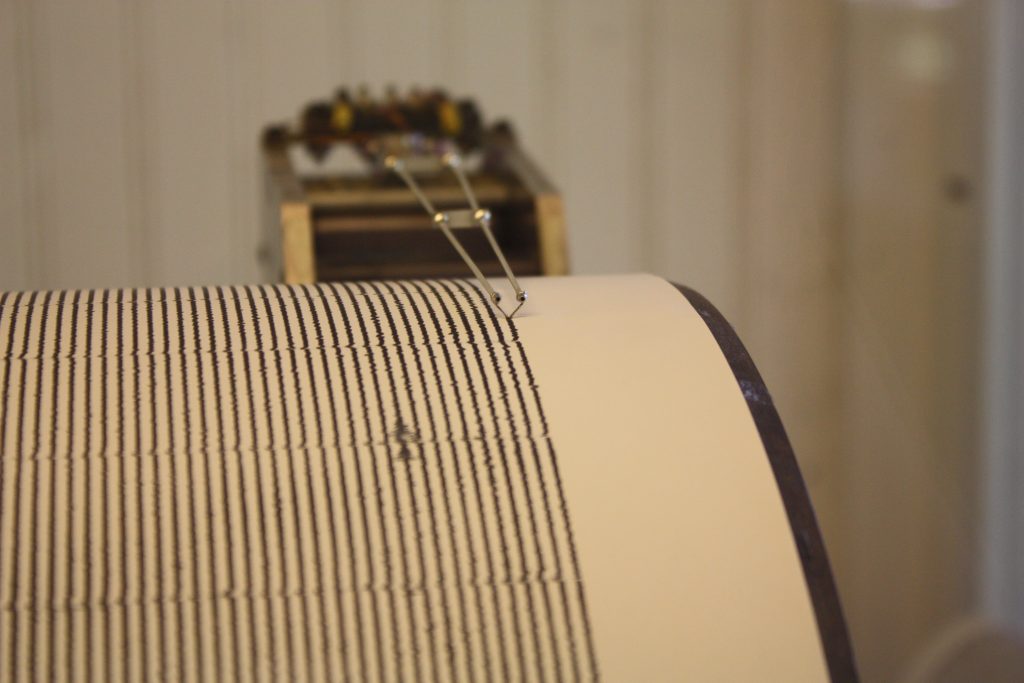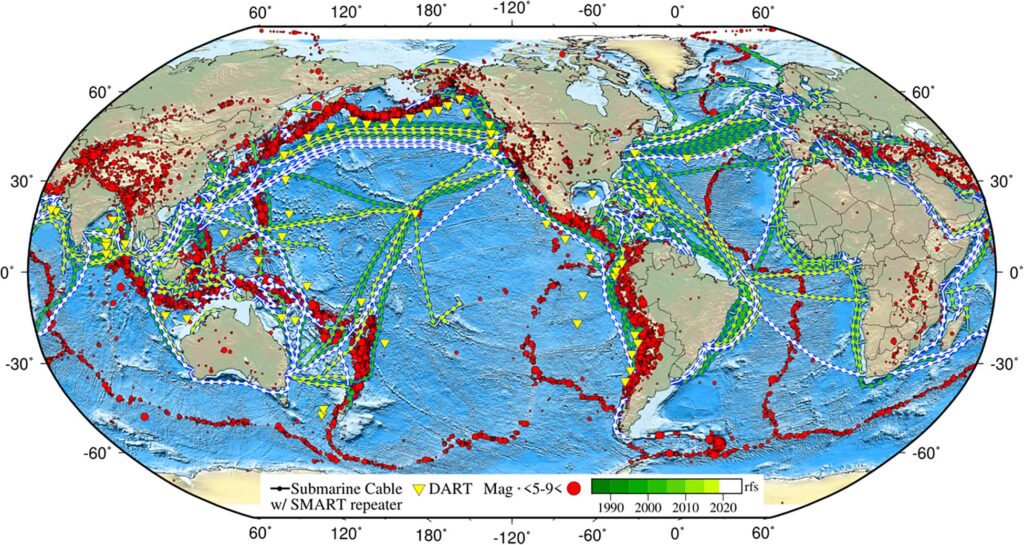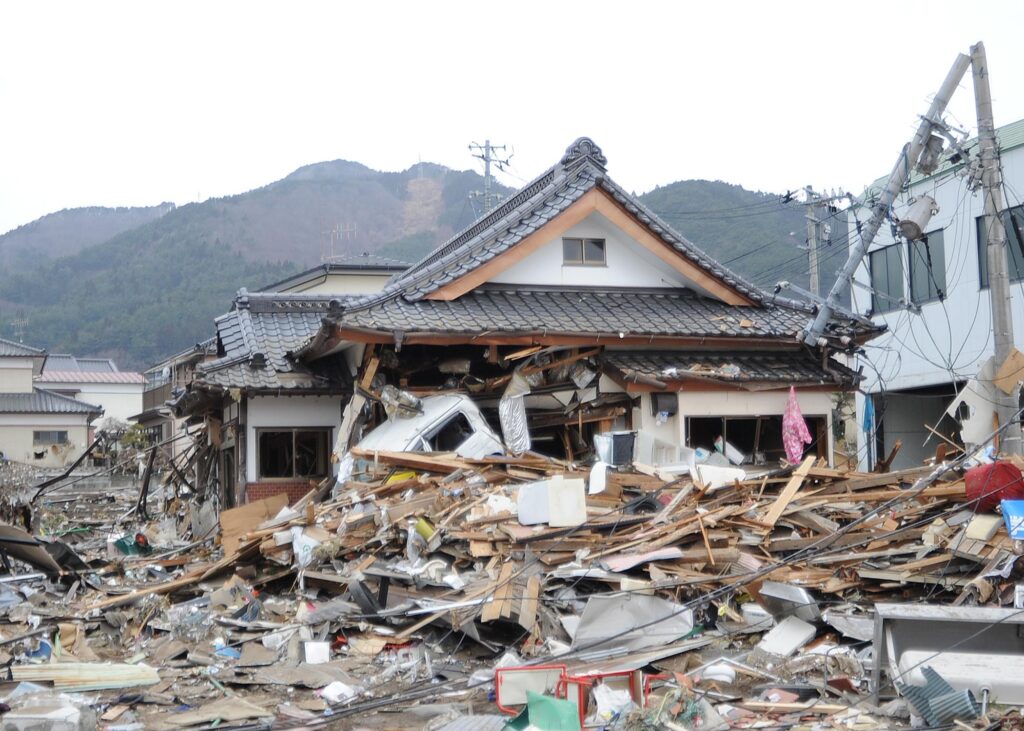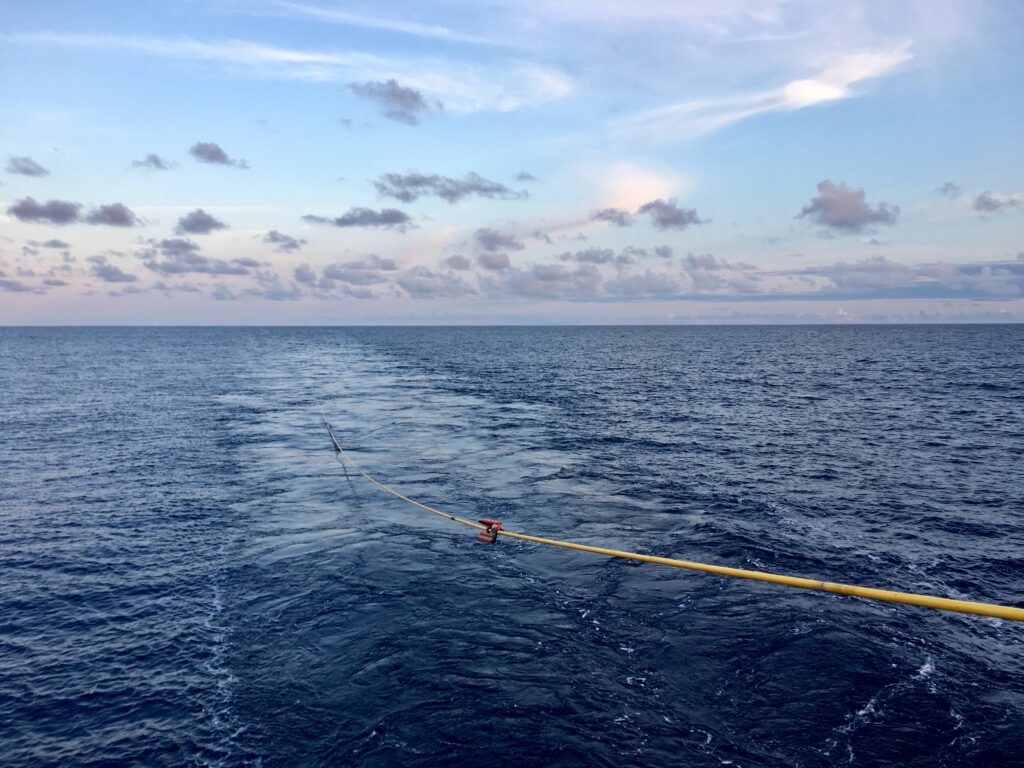An everyday quirk of physics could be an important missing piece in scientists’ efforts to predict the world’s most powerful earthquakes. In a study published in the journal Science, researchers at The University of Texas at Austin discovered that a frictional phenomenon could be key to understanding when and how violently faults move. That’s because… Continue Reading Earthquake Scientists Have a New Tool in the Race to Find the Next Big One
In Search of the Next Big One
Subduction zones are the source of the world’s most dangerous earthquakes and tsunamis. UTIG’s researchers are on a mission to understand them By Constantino Panagopulos On Jan. 26, 1700, a barrage of tsunamis ripped across the Pacific Ocean at the speed of a jet liner. The 100-foot waves slammed into the northwest coast of America… Continue Reading In Search of the Next Big One
Century-Old Technology Inspires Method for Early Warning Tsunami and Earthquake Detection
A million kilometers of fiber optic cable lie on the ocean floor, carrying telecommunication signals across vast stretches of ocean to keep the whole world connected. A new international collaboration, including experts from The University of Texas at Austin, aims to turn them into a global early warning system for tsunamis and earthquakes, as well… Continue Reading Century-Old Technology Inspires Method for Early Warning Tsunami and Earthquake Detection
Earthquake Forecasts Move a Step Closer to Reality
Earthquakes — like lightning — strike unpredictably. The Earth’s tectonic plates, however, hide subtle warnings that a major fault may soon break. Like forecasting a thunderstorm, knowing how to read the warnings could help communities protect lives, infrastructure and local economies. For decades, scientists have struggled to reliably give forecasts for major earthquake hotspots, but… Continue Reading Earthquake Forecasts Move a Step Closer to Reality
Slow Slip’ Earthquakes’ Hidden Mechanics Revealed
Slow slip earthquakes, a type of slow motion tremor, have been detected at many of the world’s earthquake hotspots, including those found around the Pacific Ring of Fire, but it is unclear how they are connected to the damaging quakes that occur there. Scientists at The University of Texas at Austin have now revealed the… Continue Reading Slow Slip’ Earthquakes’ Hidden Mechanics Revealed





